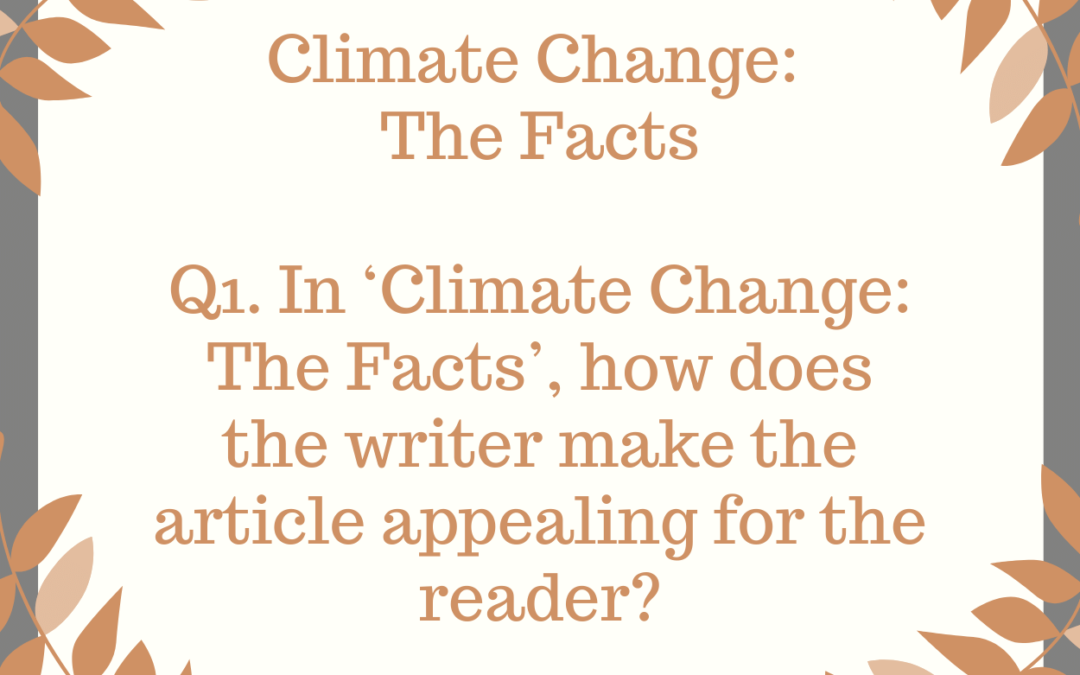Edexcel English IGCSE: Climate Change: The Facts
Q1. In ‘Climate Change: The Facts’, how does the writer make the article appealing for the reader? You should consider the writer’s use of language. Refer closely to the passage to support your answer. You may use brief quotations.
Edexcel English IGCSE Model Essay by an Expert
‘Climate Change: The Facts’ is an informative article, designed to provide information about climate change. However, in order to engage the reader, the writer must also include features which are appealing. In this article, the clear layout, striking images and friendly language make the article enjoyable to read.
The layout and images in this article make it visually appealing and easy to read. The article is laid out in columns, which creates lots of space on the page, so the reader isn’t overwhelmed by a large block of text. The use of questions as subtitles creates an inquisitive tone, suggesting that the article is providing information on a topic which many people may not know about. Each sub-heading is in a bold font, so the reader can quickly find the section which they consider most interesting. The images provide visual representations of the phenomena described in the written article. They use bright primary colours which capture the reader’s attention; these colours are associated with simplicity, which makes the diagrams seem easy to understand. In order to make these factual diagrams more appealing, there are unnecessary details added to the images, such as the river, satellite and cityscape in the middle image. Thus the purpose of these images is not just to inform, but also to entertain.
The writer uses colloquial language to avoid the technical subject matter becoming too heavy. Although the writer does use some technical language to lend scientific authority to her claims (for example, “atmospheric carbon dioxide”), generally she attempts to keep the tone light-hearted and easy-to-read. Interspersed with the technical terms is non-scientific language to help describe scientific phenomena, such as “mop up some of the heat”, “hangs around” and “burping”. This aids understanding of the content and contributes to the light-hearted tone. She also uses idiomatic expressions such as “a fringe subject”, “political hot potato” and “nasty sting in its tail”. These create a conversational tone, which is appealing to the reader, who is very unlikely to be an expert in environmental science.
Nevertheless, the writer is describing a serious issue, and uses emotive vocabulary to appeal to the reader’s sense that something should be done about it. The alliteration in “relentless rise” creates drama, adding to the frightening impression that climate change is an unstoppable force. The word “trigger” is repeated in the article. This is an emotive word, which has associations with violence and trauma. The phrase “scientists fear” is also repeated several times, which contributes to the sense of anxiety surrounding the subject. These evocations of anxiety help to make the issue sound urgent and important.
This article is intended for non-scientists, and thus it is important that it appeals to a non-expert audience. By keeping the tone light-hearted and making the science easy to understand, the writer succeeds in creating an appealing article.



